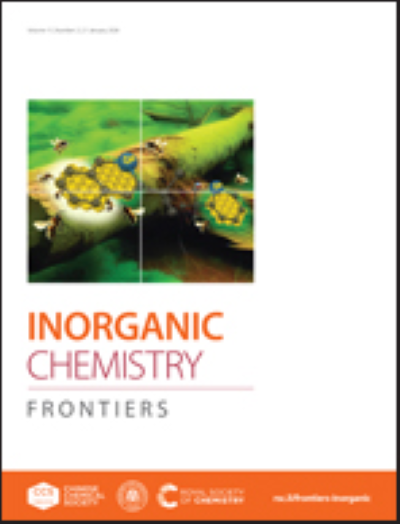Mn doping regulating electronic structure of Co3O4 to construct dual active sites for Oxygen electrocatalysis
IF 6.1
1区 化学
Q1 CHEMISTRY, INORGANIC & NUCLEAR
引用次数: 0
Abstract
Efficient bifunctional catalysts for oxygen reduction reactions (ORR) and oxygen evolution reactions (OER) are crucial for rechargeable Zn-air batteries (ZABs). However, these catalysts often suffer from poor O2 conversion efficiency and a lack of dual active sites for oxygen reactions. Regulating electronic structure through element doping is an efficient solution to construct dual active sites of catalysts. Nevertheless, the mechanisms of O2 adsorption/activation, the nature of the reaction active sites, and the associated energy barriers remain poorly understood. Herein, we report on a Mn-doped Co3O4 (MnCo2O4) bimetallic oxide. The impact of Mn doping on the ORR/OER performance of Co3O4 is investigated by both density functional theory (DFT) calculations and experimental methods. The DFT findings indicate that Mn doping modifies the electronic structure, activates Co sites in Co3O4, and introduces new Mn active sites, resulting in dual active sites for OER/ORR. As predicted, MnCo2O4 exhibits remarkable ORR/OER performance, with a potential difference (ΔE) as low as 0.87 V, which is 0.11 V smaller than that of Co3O4. Furthermore, Rechargeable ZAB delivers a narrow discharge-charge voltage gap (0.76 V), high cycle stability over long periods (90 h), and outputs a peak power density of up to 97 mW·cm-2 in a liquid system. Such excellent results demonstrate that Mn-Co bimetallic synergistic catalysis is an effective strategy for improving ORR/OER selectivity.求助全文
约1分钟内获得全文
求助全文
来源期刊

Inorganic Chemistry Frontiers
CHEMISTRY, INORGANIC & NUCLEAR-
CiteScore
10.40
自引率
7.10%
发文量
587
审稿时长
1.2 months
期刊介绍:
The international, high quality journal for interdisciplinary research between inorganic chemistry and related subjects
 求助内容:
求助内容: 应助结果提醒方式:
应助结果提醒方式:


